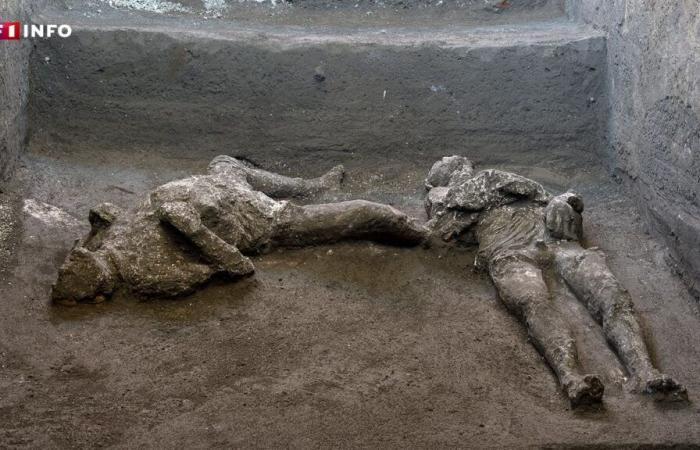Researchers have applied the latest genetic analysis techniques to the bones of 14 victims of the Vesuvius eruption in 79 AD.
The results of this new research revealed some surprising things.
Archaeologists have for decades studied the remains of the people of Pompeii, who perished in 79 CE. At the time of the eruption, the ambient temperature rose to 520 degrees Celsius, burning the fat and tissues of the inhabitants. A rapid drop in temperature would then have vitrified the human remains, then the volcanic ashes buried the Roman city, which helped preserve many of the bodies of the 3,000 deaths caused by the disaster.
An international team of archaeologists applied the latest genetic analysis techniques to the bones of 14 inhabitants of Pompeii, whose plaster casts are preserved today frozen in the moment of their death. Particularly poignant scenes, like a woman wearing a gold bracelet and holding her son on her lap, or two sisters united in a strange embrace for their last moments.
“Our goal was to test suggested interpretations in the absence of genetic data about the victims’ identities and their relationships to each other, based on the shape and position of the bodies.“, explain the researchers, whose work was published on November 7 in the journal Current Biology (new window). By heating the material – bones mixed with plaster – so as to liquefy it, the team was able to extract DNA from five of the fourteen casts of victims charred during the eruption.
Bad interpretations
The results revealed surprising findings that contradict previous accounts of the victims’ identities and relationships. “We show that individuals’ genders and family relationships do not correspond to traditional interpretations“, explain the authors of the study. For example, an adult wearing a gold bracelet with a child on his lap – interpreted as a mother and her child – turned out to be a man who has no biological connection to the child.
-
Read also
Splendid frescoes discovered during excavations in Pompeii
Similarly, a pair of individuals believed to have died in the embrace – often interpreted as two sisters – actually included at least one male according to these genetic analyses. Previous studies had already suggested that they were two men, perhaps lovers. It is now a certainty. Thanks to technological advances, the team of archaeologists hope to be able to restore their true identity to other inhabitants of the Roman city.







